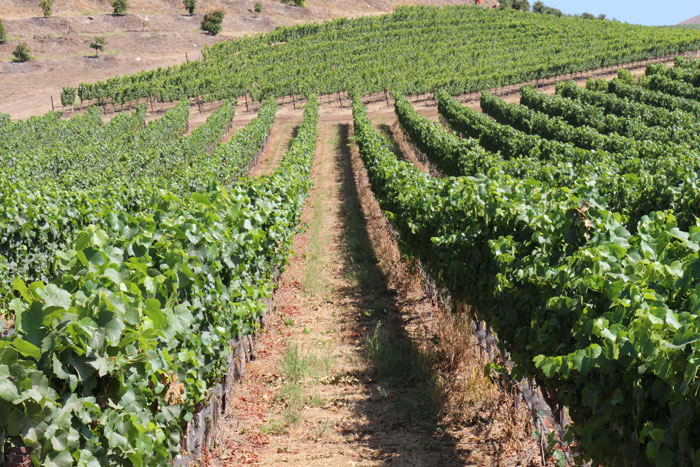
University of California Cooperative Extension specialists recommend monitoring vines for mealybugs early in the season on a warm day. Randomly select 20 vines in each block of the vineyard, each at least a few vines in from the end of the row. Then, check basal leaves for the presence of any grape, obscure, and longtailed mealybugs.

Now is a good time to check vines for the presence of mealybugs, which are becoming more and more of a threat to California vineyards.
The number of infestations from three species of mealybugs in the genus, Pseudococcus, has been rising in the past few years.
Of these, the grape and obscure mealybugs are the primary concern with vineyards in the San Joaquin and North Coast regions while the obscure and longtailed mealybugs can cause damage in Central Coast vineyards.
University of California Cooperative Extension specialists recommend monitoring vines for mealybugs early in the season on a warm day. Randomly select 20 vines in each block of the vineyard, each at least a few vines in from the end of the row. Then, check basal leaves for the presence of any grape, obscure, and longtailed mealybugs.
Susceptibility to mealybug damage varies by variety. It is worse on varieties that produce clusters close to the base of the shoot, because the fruit often touches old wood. Mealybugs damage grapes by contaminating clusters with cottony egg sacs, larvae adults and honeydew. Often the honeydew is covered with a black sooty mold. All three species can transmit grape viruses.
Grape and obscure mealybugs lay yellow to orange eggs within an egg sac; longtailed mealybugs give birth to live crawlers. Crawlers of all three species are yellow- to orange-brown in color.
The grape mealybug has two generations each year and overwinters as an egg or crawler in or near a white, cottony egg sac under loose bark and in the cordons or upper portions of the trunk. In spring, most grape mealybug crawlers move toward the base of spurs and then onto green shoots, reaching maturity in mid-May to early June. Most females return to old wood to lay eggs that hatch from mid-June to July. First-generation crawlers then move out to the green portions of the vine to feed on fruit and foliage in late June or early July; mostly immatures are seen through July. Adult females will appear in late summer and early fall. Some females will oviposit in the fruit clusters, but the majority of the females return to the old wood to lay the overwintering eggs.
Obscure and longtailed mealybugs do not diapause over the winter and have multiple overlapping generations with all life stages present on the vines year round. Obscure mealybug overwinters under the bark of the trunk, cordons and spurs (the same as grape mealybug). In late spring, some obscure mealybugs begin to feed on leaves. But, the majority of the population remains hidden under the bark or in the tight clusters.
Adults of all three Pseudococcus species are about 0.2-inch long, flat, oval shaped and have a white, waxy covering with wax filaments sticking out from circumference of the body. Longer filaments from the posterior end make these mealybugs appear to have tails. These filaments are longer than those on the vine mealybug, a newly introduced species that is covered in a separate section.
The grape mealybug and the obscure mealybug closely resemble each other. To distinguish them, poke a female with a sharp point (without puncturing the body) to release a defensive excretion. If the color of the excreted fluid is reddish orange, it is most likely grape mealybug. If clear, it is probably obscure mealybug.
These two species also differ in their life cycles. Grape mealybug diapauses in winter and has two generations a year that do not overlap. Consequently, if only one or two life stages of a mealybug are present at a given time, it is most likely a grape mealybug
Obscure mealybug, on the other hand, does not diapause. As a result, all life stages are present throughout the year.
Longtailed mealybug is similar in appearance to the other two species but has much longer waxy filaments on the posterior end (they are at least as long as the body of the adult female). Longtailed mealybugs are only a problem in Central Coast vineyards.
These three mealybugs are in a different genus than another species of mealybug which is also spreading among California’s grape growing areas – vine mealybug. It’s a member of the Planococcus genus. Because UC recommendations for managing these pests differ, depending on the species, it’s important to identify the individual species found in a particular vineyard.
More information about each of these four mealybug species and control recommendations are available at www.ipm.ucdavis.edu.
About the Author(s)
You May Also Like



